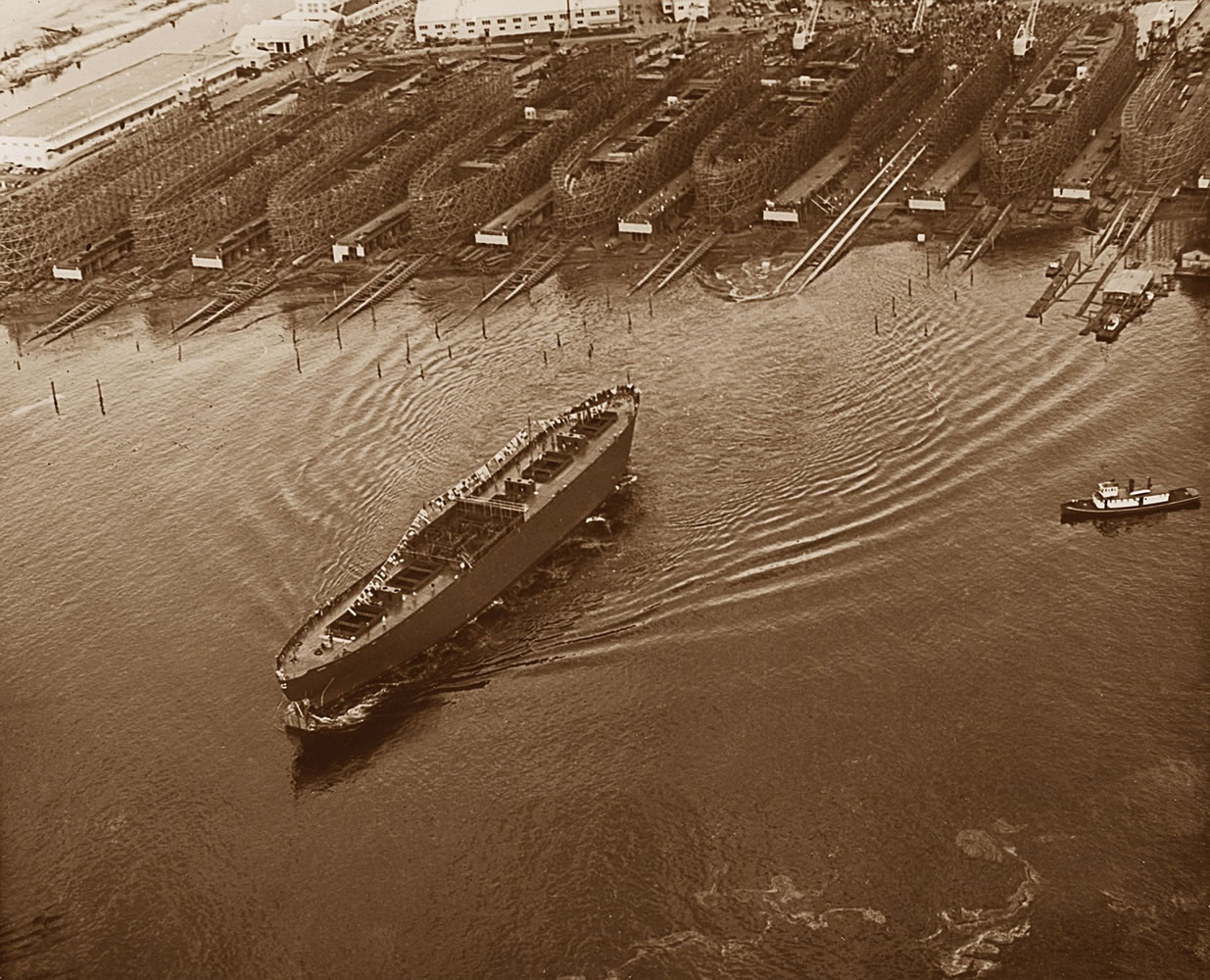o What: “News Aloft,” a look at aviation’s role in the career of Vancouver journalist Leverett Richards, a Clark County Sun and Oregonian reporter.
o Where: Confluence office, Pearson Headquarters Building, 1109 E. Fifth St., at Fort Vancouver National Historic Site.
o When: The free exhibit is generally open to the public during Confluence’s operations, 9 a.m. to 4 p.m. Mondays through Fridays.
The Pearson Headquarters Building occupied by Confluence is the last surviving structure from the World War I-era spruce mill.
o What: "News Aloft," a look at aviation's role in the career of Vancouver journalist Leverett Richards, a Clark County Sun and Oregonian reporter.
o Where: Confluence office, Pearson Headquarters Building, 1109 E. Fifth St., at Fort Vancouver National Historic Site.
o When: The free exhibit is generally open to the public during Confluence's operations, 9 a.m. to 4 p.m. Mondays through Fridays.
Launches at the Kaiser Shipyard were some of Vancouver’s biggest events during World War II. But when the first vessel was launched in 1942, journalist Leverett Richards was not among the crowd along the north bank of the Columbia River; he was above it.
The Oregonian reporter was in a plane over the river, taking aerial photographs of the event. Richards was piloting the plane, by the way, when he snapped those photos.
“He leaned out the window” to take them, historian Mary Rose said.
Two of the photographs taken by the longtime Vancouver resident on that launch day in 1942 are part of an exhibit that opened recently at the Fort Vancouver National Historic Site.
“News Aloft” shows how aviation influenced Richards during a reporting career that touched seven decades. Richards died in 2000 at age 92.
“The idea is to show how aviation and aerial photography broadened the news,” Rose said.
With Richards’ aerial photos of the Cascades, “People who lived here all their lives saw mountains from above,” Rose said.
The interpretive panels are on public display at the office of Confluence, in the historic Pearson Headquarters Building just west of the Pearson Air Museum.
Sometimes flying was how Richards reported the story. Durkee Richards recalled accompanying his dad on one memorable assignment in 1948.
It was “the Vanport flood,” Durkee Richards said. “I had a chance to fly over it and see the drowned city.”
Sometimes flying was the basis of Richards’ stories, including his coverage of Valery Chkalov’s record-setting flight over the North Pole in 1937. The flight ended at the airfield at Vancouver Barracks, where Gen. George Marshall hosted the three Russian aviators.
“That probably was the first story he covered that had international significance,” said Durkee Richards, 74, a 1958 graduate of Hudson’s Bay High School. “He did talk a lot about that.
“He was there when the sealed recording barometers were unsealed, and verified the account that was told by the crew.
“He also had a lot to say about Gen. Marshall, commander at the post,” Durkee said. “Dad had a very high regard for him then, and recognized that if he had an opportunity, he would have a remarkable career. Dad’s instincts on that were correct.” (Marshall went onto become U.S. Army chief of staff during World War II, secretary of state and winner of the 1953 Nobel Peace Prize.)
Life in the air
Lev Richards was already a licensed pilot when WWII started; he became an Army Air Corps flight instructor, then joined the Air Force Reserve after the war.
Before retiring as a lieutenant colonel, he was called back to active duty. As an Air Force pilot, he followed Chkalov’s path by flying over the North Pole in 1952; he then went one better by flying over the South Pole in 1956 during a research project in Antarctica.
Fifty years after Richards started his reporting career, “Mount St. Helens was a highlight for him,” Durkee Richards said. (Leverett Richards married Virginia Durkee in 1934.)
Lev Richards was 72 when Mount St. Helens erupted, and he flew a small plane to the volcano so photographers could shoot images of the devastation.
Following Richards’ death in 2000, The Columbian carried several pieces about the self-effacing man who was a Vancouver resident for 69 years. And in a letter to the editor, a longtime friend offered Richards’ own description of himself: “Plagued by shyness, but compelled by curiosity.”





